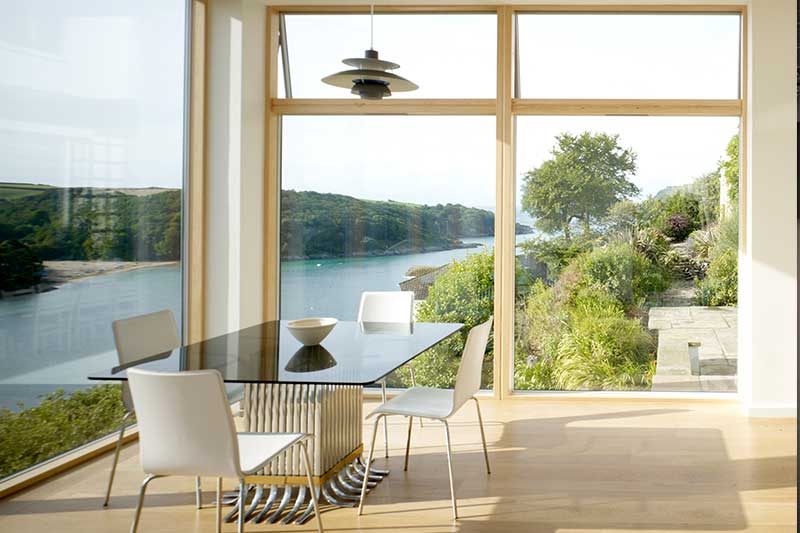Choosing Between Double and Triple Glazing: Weighing the Benefits
20
Research shows that the right window glazing significantly impacts our comfort, energy efficiency, and overall home performance. Selecting between double and triple glazing can be a crucial decision, affecting thermal performance, acoustic insulation, and cost-effectiveness.

Understanding Your Project Needs
Before diving into the specifics, it’s essential to clearly define your project goals. Are you replacing old windows, renovating an existing property, or embarking on a new build? These factors will help determine what you need from your glazing. Categorizing your priorities into 'needs' and 'wants' will streamline the decision-making process and help you navigate the myriad of options available.
Thermal Performance
Thermal performance, indicated by the U value (W/m²K), measures the rate of heat transfer through a window. A lower U value signifies better insulation and reduced heat loss. Triple glazing generally offers superior thermal performance compared to double glazing, but this advantage can be minimized if your home's walls and insulation are not up to standard. When evaluating windows, consider the whole window U value rather than just the glass. This includes the frame's impact, which can significantly alter overall performance. Ensure your supplier provides the whole window U value for an accurate comparison.
Solar Gain and Overheating
Solar gain, represented by the G value, measures the amount of solar energy that passes through the glass. Higher G values mean more solar energy enters your home, which can be a double-edged sword. While it reduces heating needs in winter, it can cause overheating in summer, especially in well-insulated homes with large glazed areas. Standard double glazing typically has a G value between 0.6 and 0.7, while triple glazing ranges from 0.45 to 0.55. The lower G values of triple glazing can help prevent overheating. Additionally, special solar control coatings can further reduce G values, although they add about 10-15% to the cost.
Acoustic Performance
Acoustic performance, measured in decibels reduction weighting (dB Rw), indicates how well a window reduces noise. Higher dB Rw values mean better sound insulation. While triple glazing can improve acoustic performance, certain double-glazed units with varied glass thicknesses and acoustic interlayers can sometimes perform better.
Weight and Installation Considerations
Triple glazing adds considerable weight, typically an additional 10kg/m². It’s crucial to ensure your window or door system can handle this load. Reinforcement may be necessary for UPVC and aluminum frames, potentially affecting their thermal performance. Timber and aluminum-clad timber systems, often designed for colder climates, are usually better equipped to support triple glazing. Proper installation is essential. Handling heavier triple-glazed units requires experienced installers and appropriate equipment to ensure safety and avoid damage.
Cost Analysis
The cost difference between double and triple glazing varies. Some systems may need reinforcement, increasing costs. However, if the manufacturing process is similar, the cost increase might be as low as 5-10%, reflecting the additional glass cost.
Energy Savings
While triple glazing offers significant thermal performance improvements, the actual energy savings depend on your home's overall efficiency, including walls, floors, and roofs. Airtightness is crucial; even small gaps can lead to significant heat loss, reducing comfort and increasing energy costs. Consulting a specialist, such as a Retrofit Coordinator or an Accredited Energy Assessor, can provide a comprehensive assessment of your building's performance.
Considering your entire building’s performance can you ensure that your investment in new glazing truly pays off. Contact us today for expert advice tailored to your specific needs.
Other Articles
Season's Greetings From Ecotec Windows
15
Is Net Zero Signalling The Decline of Double Glazing
03
Triple Glazing FAQs With Internorm Windows
04
Rationel Inspiration Brochure Now Available
03
Bring Comfort and Style to your home with Internorm’s iTec Shading System
04
Discover The Bel’M Doors Brochure
01
Internorm Advanced iTEC Secure Locking System for Maximum Home Safety
04
Discover All The Benefits Of VELFAC Composite Windows & Doors
01
Design Style Studio Range By Internorm
02
Rationel & Maintenance Brochure Launched For 2025
14